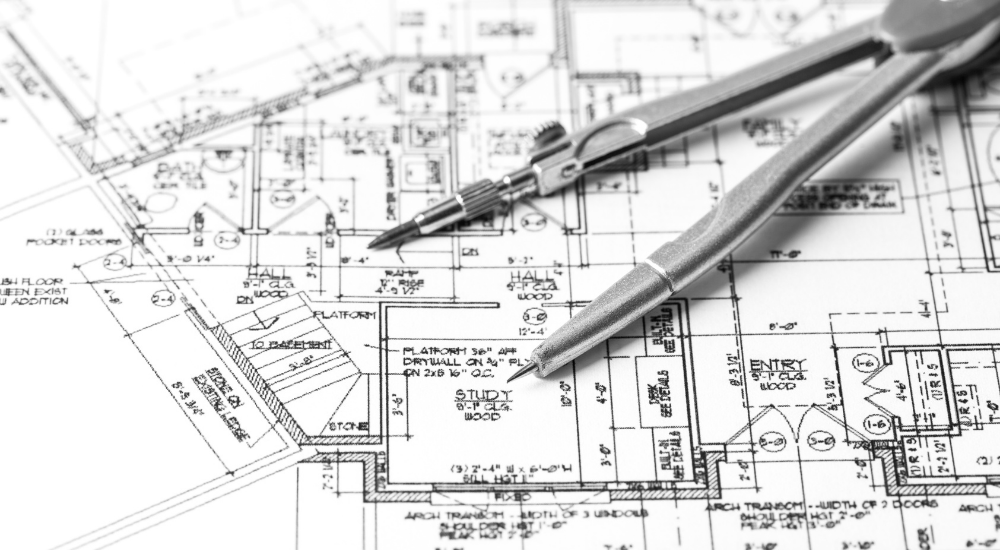Architect Hiring Guide for Homeowners and Developers
Architect Hiring Guide for Homeowners and Developers
Blog Article
Comprehending the Diverse Occupation Paths Available for Aspiring Architect
As a hopeful Architect, you have a globe of profession paths awaiting you. Each path provides distinct challenges and opportunities to apply your imagination and technical expertise. Whether you're attracted to standard architecture or the nuances of lasting design, there's a specific niche that straightens with your interests. Comprehending these varied options can shape your professional trip, yet which instructions will you pick to discover first?
Traditional Architecture: Designing Buildings and Frameworks
Traditional architecture concentrates on developing structures and structures that blend capability with aesthetic charm. Your layouts can show cultural heritage, showcasing local customs while fulfilling contemporary requirements.
You'll develop skills in drafting, model-making, and site evaluation, permitting you to picture and connect your concepts effectively. Engaging with customers, you'll need to understand their vision and translate it into viable styles.
In addition, building codes and sustainability practices are important in your work, ensuring your structures are ecologically friendly and secure. As you expand in your occupation, you'll locate possibilities in property, industrial, and even reconstruction jobs, each offering distinct difficulties. Embracing standard architecture leads the way for a satisfying job that admires the past while shaping the future.
Urban Planning: Forming Areas and Public Spaces
As an aspiring Architect, you can play an important role as a metropolitan organizer, changing how neighborhoods function and connect. By using community engagement approaches, you'll guarantee that citizens have a voice in forming their environment. And also, incorporating lasting style principles will certainly assist produce spaces that not only meet today's demands yet likewise protect the future.
Function of Urban Planners
While many might believe of engineers as the single visionaries behind buildings, urban organizers play a vital function fit the more comprehensive landscape of areas and public areas. They analyze land usage, zoning laws, and neighborhood requires to create lasting environments that enhance lifestyle. By teaming up with numerous stakeholders, you'll help make parks, transport systems, and domestic locations that advertise social communication and availability. Urban organizers also concentrate on ecological considerations, making sure that growths integrate environment-friendly spaces and support biodiversity. Your competence in spatial style and neighborhood characteristics allows you to picture future development while maintaining cultural heritage. In this crucial duty, you'll directly affect just how individuals experience their surroundings, making every project a possibility for favorable change.
Neighborhood Engagement Approaches
Efficient area involvement approaches are essential for metropolitan organizers to ensure that the voices of homeowners are listened to and valued in the planning process. To cultivate significant dialogue, you ought to focus on open forums and workshops where neighborhood members can share their ideas and worries. By actively listening and including comments, you'll produce spaces that show the area's needs, ultimately leading to more effective and sustainable city environments.
Sustainable Design Concepts
When creating city spaces, incorporating lasting layout principles is vital for producing environments that grow both ecologically and socially. Take into consideration integrating green spaces, like parks and gardens, to improve biodiversity and boost air top quality.
Creating with water conservation in mind is also crucial-- think of rainfall gardens and permeable surfaces to manage stormwater. Involving community participants during the planning process guarantees that the areas you create fulfill their requirements and urge social interaction. By embracing these principles, you'll add to vibrant, sustainable metropolitan landscapes that profit everyone.

Landscape Architecture: Creating Lasting Exterior Environments
As you check out landscape design, you'll find essential style concepts that create functional and stunning outdoor rooms. Sustainable techniques play a crucial function in guaranteeing these settings flourish while reducing environmental effect. And also, you'll locate a selection of job chances that permit you to make a genuine difference in how individuals connect with nature.
Design Principles in Landscape
Recognizing layout concepts in landscape style is crucial for developing lasting outdoor environments that integrate with nature. You'll need to contemplate components like range, equilibrium, and percentage to guarantee your designs really feel natural and inviting. In addition, pay attention to seasonal modifications, developing with products that match the surroundings year-round.
Sustainable Practices Introduction
Lasting techniques in landscape design not just concentrate on looks however also prioritize ecological wellness and resource preservation. By integrating indigenous plants, you enhance biodiversity and decrease the need for chemical plant foods and chemicals. Applying efficient irrigation systems aids preserve water and minimizes overflow, safeguarding neighboring ecosystems. You can create areas that promote soil wellness, such as practicing and making use of natural materials permaculture principles. In addition, integrating eco-friendly framework, like rain yards and permeable pavements, help in stormwater management and minimizes urban warmth. You contribute to a much healthier planet and provide areas that promote community connection when you develop outdoor atmospheres with sustainability in mind. Ultimately, these methods assure your designs benefit both people and the atmosphere for many years to come.
Job Opportunities Expedition
With a solid foundation in lasting methods, landscape architecture supplies a variety of occupation courses that enable you to make a meaningful effect on the environment. Urban coordinators often team up with landscape architects to develop environment-friendly rooms in urban setups, enhancing city livability. If you're enthusiastic concerning education, take into consideration ending up being a landscape style educator, inspiring future generations.
Lasting Design: Focusing on Eco-Friendly Practices
As you explore your career in architecture, welcoming green practices can set you apart in an affordable field. Sustainable style focuses on producing buildings that reduce moved here environmental impact while improving owner health. By integrating renewable materials, energy-efficient systems, and lasting building methods, you'll add to a greener future.
Beginning by acquiring knowledge of environment-friendly accreditations like LEED or BREEAM, which can strengthen your qualifications. Consider how all-natural light, air flow, and thermal effectiveness can enhance style. Collaborate with designers and environmental experts to introduce options that reduce waste and preserve resources.
Don't neglect the value of community involvement-- appealing local stakeholders can motivate styles that harmonize with the setting. As customers increasingly prioritize sustainability, your experience in eco-friendly practices will certainly not only draw in jobs yet additionally meet your passion for liable architecture. Welcome this critical element of the occupation, and view your job grow.
Historical Preservation: Protecting and Bring Back Cultural Heritage
While you commence on your building trip, consider the essential role of historical preservation in preserving our social heritage. This field concentrates on the defense and repair of substantial structures, sites, and frameworks that tell the tales of our past. By taking part in historic preservation, you'll assist safeguard read the article the building heritage that forms neighborhood identity.
As a historic conservation Architect, you'll analyze historical importance and evaluate the condition of frameworks. You'll work closely with chroniclers and guardians to guarantee authentic remediation techniques are employed. This job course enables you to blend creative thinking with study, enabling you to make services that value original materials and craftsmanship.
Your job not just adds to sustainability by recycling existing structures however also promotes a feeling of satisfaction within neighborhoods. Embracing this path will assist you end up being a guardian of background, protecting the tales and visual appeals that enhance our lives.
Interior Design: Enhancing Indoor Spaces
Historic preservation and interior style both share a dedication to improving the constructed environment, yet they concentrate on various elements. While historical preservation highlights maintaining a structure's historical and cultural value, interior architecture zeroes in on maximizing interior spaces for performance and looks.
As a hopeful Architect, you'll discover that interior architecture allows you to mix imagination with technical skills. You'll design spaces that not only look great however also promote convenience and effectiveness. This area involves understanding how light, shade, and products interact within a room, influencing state of mind and usability.
You'll work with different tasks, from property homes to industrial offices, guaranteeing that each setting meets the demands of its occupants. By focusing on user experience, you can transform interiors into inspiring and useful areas, making a substantial effect on just how individuals communicate with their surroundings. Welcome the chance to boost interior environments and form the way individuals function and live.
Industrial Design: Combining Functionality With Appearances
Commercial design plays a vital role in producing items that seamlessly blend aesthetics with functionality, making sure that what you use daily is not only aesthetically appealing but also practical. As an ambitious Architect, you can engage yourself in this field, focusing on developing every little thing from furniture to customer electronic devices. Your work includes understanding individual needs, products, and Read Full Report manufacturing processes, enabling you to develop cutting-edge solutions that improve daily experiences.
In industrial layout, you'll commonly team up with engineers, manufacturers, and marketers, guaranteeing that your designs are not just beautiful but also possible. You'll discover to balance type and function, prioritizing usability without giving up design. By sharpening your skills in sketching, 3D modeling, and prototyping, you'll be well-equipped to bring your ideas to life. This career path offers a vibrant environment where imagination fulfills functionality, making it a rewarding selection for engineers curious about shaping the products of tomorrow.
Regularly Asked Inquiries
What Educational Accreditations Do I Need to End Up Being an Engineer?
To end up being a designer, you'll require a professional degree in style, usually a Bachelor's or Master's. Furthermore, you'll have to finish a teaching fellowship and pass the Architect Registration Evaluation to practice legally.
Are There Qualification Needs for Different Building Career Paths?
Yes, there're qualification needs for numerous building courses. Architect. You'll need to pass tests, full internships, and in some cases pursue specialized training, relying on your picked emphasis, like landscape style, city design, or historic preservation
What Software Application Abilities Are Essential for Architects Today?

Just How Can I Gain Practical Experience While Researching Style?
You can acquire practical experience by interning at architectural companies, taking part in style competitions, offering for community projects, or working together with schoolmates on real-world tasks. These opportunities boost your skills and build important links in the market.
What Work Opportunities Exist Outside Traditional Design Firms?
You can explore numerous task opportunities outside typical architecture firms, like city planning, interior decoration, landscape style, building monitoring, realty development, or even functions in sustainability consulting. Each offers one-of-a-kind challenges and benefits.
Whether you're drawn to standard style or the subtleties of sustainable style, there's a particular niche that aligns with your rate of interests.When creating urban areas, including lasting layout principles is critical for creating atmospheres that grow both environmentally and socially.As you explore landscape style, you'll discover crucial design concepts that develop useful and beautiful exterior rooms.Understanding style concepts in landscape style is crucial for creating sustainable outdoor settings that balance with nature.In industrial style, you'll frequently collaborate with makers, online marketers, and engineers, making sure that your layouts are not only gorgeous but also practical.
Report this page